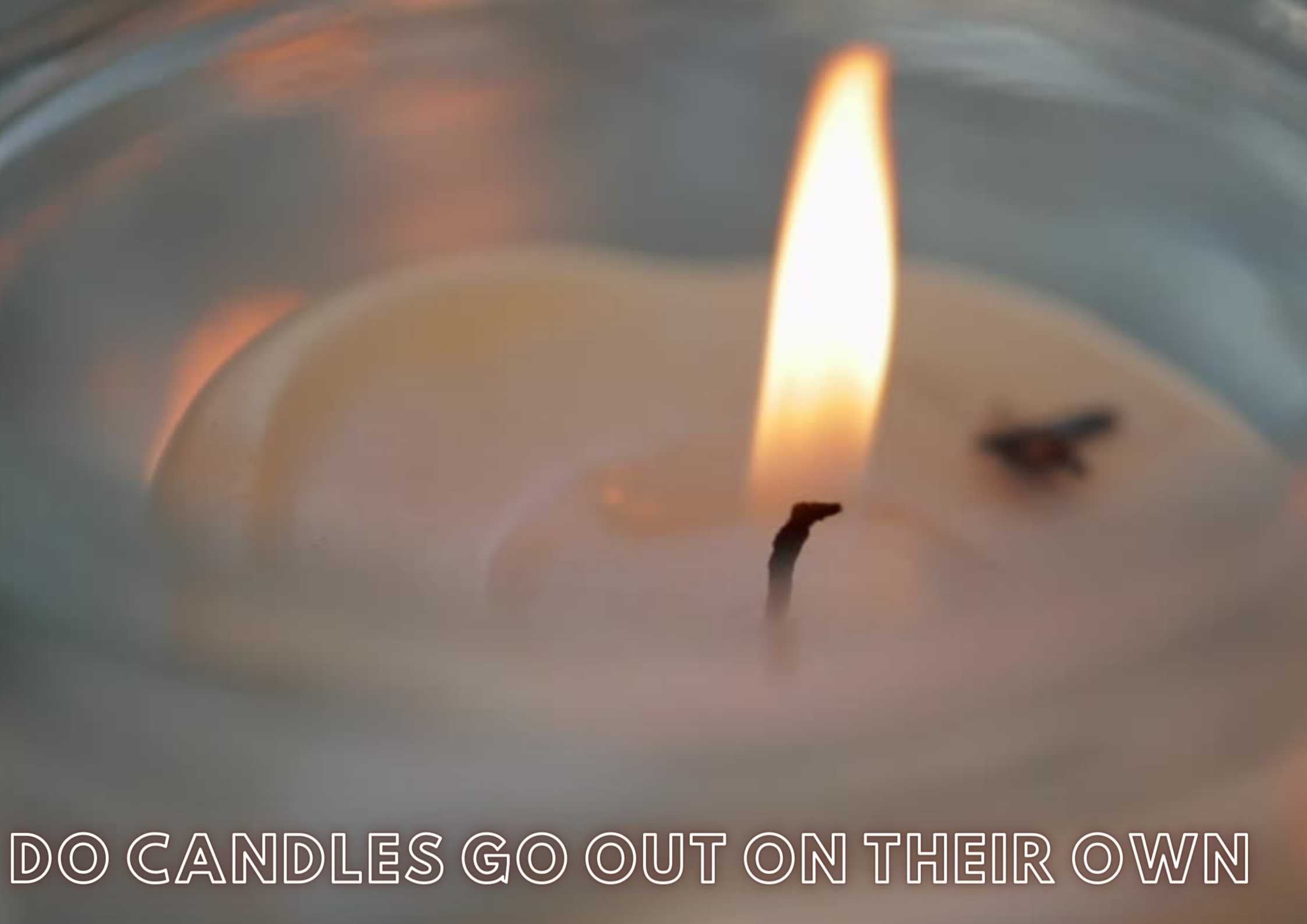Do candles go out on their own?
Feb 19 , 2024
do candles go out on their own
Many of us wonder if it's safe to walk away from a burning candle. Research shows that an estimated 8,200 home fires each year are started by candles. This article will guide you through the factors affecting whether a candle can go out on its own and how to reduce fire risks effectively.
Keep reading for some illuminating tips!
Key Takeaways - do candles go out on their own?
- Candles may self - extinguish depending on wax type, with soya or beeswax more likely to go out by drowning the wick in a smaller pool of liquid wax.
- Choosing candles with self - extinguishing wicks, like those made from zinc or tin, increases the likelihood of a candle going out on its own once burnt down.
- Regularly trimming the candle's wick to 1/4 inch helps prevent large flames and promotes an even burn that could lead to self-extinction.
- Always place candles on a flat, heat - resistant surface away from flammable objects for safe burning and reducing fire risks.
- It is crucial to adhere to appropriate burn times as recommended by manufacturers and never exceed these limits for safety reasons.
NEVER LEAVE A CANDLE BURNING UNATTENDED, ALWAYS BLOW IT OUT IF YOU LEAVE!
Factors That Determine if Candles Will Burn Out on Their Own
The type of wax and material used for the wick can affect whether a candle will burn out on its own. Additionally, the length of time the candle is burnt for also plays a role in its self-extinguishing capabilities.
Wax type
Paraffin wax, commonly found in many candles, has a specific burn time and may not extinguish itself before reaching the candle's base. Candles crafted from soy or beeswax can behave differently; they often burn slower and might self-extinguish as they form a smaller pool of liquid wax that drowns the wick.
Different wax types affect how long a candle stays lit and under what conditions it may snuff out.
Container candles with sturdy wax that hardens around a metal wick tend to burn down completely before going out. Safety must be your top priority because these candles could become fire hazards if left unmonitored near combustible materials.
It's essential to select the right kind of candle for your desired burn time whilst being mindful of potential burning hazards mentioned by organisations like the National Fire Protection Association.
Wick material
Candles can also burn out on their own based on the type of material used for the wick. The wick material significantly influences whether a candle will extinguish itself. For instance, if a candle’s wick is made from self-extinguishing materials like zinc or tin, it increases the likelihood that the flame will go out once it reaches the end of its burning time.
In contrast, certain types of cotton wicks may continue to burn even after reaching the end of their wax supply unless snuffed out manually. This distinction in wick material underscores why choosing candles with self-extinguishing wicks is crucial for fire safety and reducing potential risks associated with unattended burning.
To ensure safe usage and minimise fire hazards, selecting candles with appropriate wick materials such as those designed to self-extinguish can help mitigate potential risks related to leaving candles unattended or allowing them to burn until they eventually extinguish on their own.
Burn time
After considering the wick material, it's essential to choose a suitable burn time. Setting an appropriate duration for burning your candles is crucial in preventing accidents and ensuring safety.
Opting for shorter burn times reduces the risk of potential hazards, making it safer to leave your candle unattended.
Ensuring you have a suitable burn time can significantly contribute to candle safety by reducing the likelihood of accidents and fires from occurring. It’s important to exercise caution and good judgement when deciding on how long a candle should be left burning.
How to Increase The Chances of Candles Burning Out on Their Own
Place the candle on a stable, heat-resistant surface and trim the wick regularly to prevent excessive burning. Choose a suitable burn time to ensure the candle doesn't burn for too long without supervision.

Use a stable, heat resistant surface
Place your candle on a stable, heat resistant surface to reduce the risk of accidents. This will help prevent the candle from tipping over or coming into contact with flammable materials.
Using a stable surface can also ensure that the wax melts evenly and the flame burns steadily, contributing to a safer burning experience for your candles.
To maintain fire safety, always place candles on a flat and sturdy base away from draughts and flammable objects. This simple step can significantly minimise the potential hazards associated with burning candles.
Trim the wick regularly
To keep your candle burning safely and efficiently, it is essential to trim the wick regularly. Trimming the wick to ¼ inch before each use helps prevent the flame from getting too large and reduces smoke and soot.
This simple step also promotes a steadier burn, increasing the likelihood that the candle will go out on its own when it reaches its designated burn time. Properly trimmed wicks allow candles to burn cleanly and self-extinguish naturally without posing a fire risk.
Regular trimming of the wick enhances safety by preventing flare-ups or large flames that can potentially cause accidents. By following this practice, you ensure that your candles remain within safe burning parameters while reducing fire hazards associated with unattended or improperly maintained flames.
Choose a suitable burn time
To ensure safety when using candles, it is crucial to select an appropriate burn time. Factors such as the size of the candle and its distance from flammable objects should be considered when determining how long a candle should be lit.
It is important to follow the manufacturer's guidelines for burning times and never exceed the recommended duration.
Considering burn time not only helps in preventing accidents but also ensures that the candle burns efficiently without excessive smoke or soot build-ups. Monitoring and adhering to suitable burn times are essential for maintaining a safe environment while enjoying the ambiance created by candles.
Conclusion
In conclusion, candles can go out on their own depending on various factors such as the type of wax and wick used. To increase the chances of candles extinguishing on their own, it is essential to place them on a stable surface and trim the wick regularly.
However, it is vital to practise caution and never leave a burning candle unattended due to fire risks. Therefore, being aware of potential hazards and practising proper candle safety is crucial for preventing accidents caused by burning candles.
FAQs
1. Can a candle extinguish itself without any help?
Yes, candles can go out on their own if the wax runs out or the flame doesn't get enough air in the candle container.
2. Are there special self-extinguishing candles for better fire safety?
Self-extinguishing candles are designed to snuff out automatically as an added precaution to prevent fire risks.
3. What should I do to make sure my candle burns safely?
To ensure your candle is safe, place it in a sturdy container and watch over it while burning; never leave it unattended.
4. How long can I expect my candle flame to last before it goes out?
The burning time of a candle depends on its size and how well you take care of it by trimming the wick and keeping it away from draughts.
5. Do all types of candles need someone to put them out?
Most candles will require someone to extinguish them, but some have built-in features that allow the flame to self-extinguish when reaching the end of its life.





